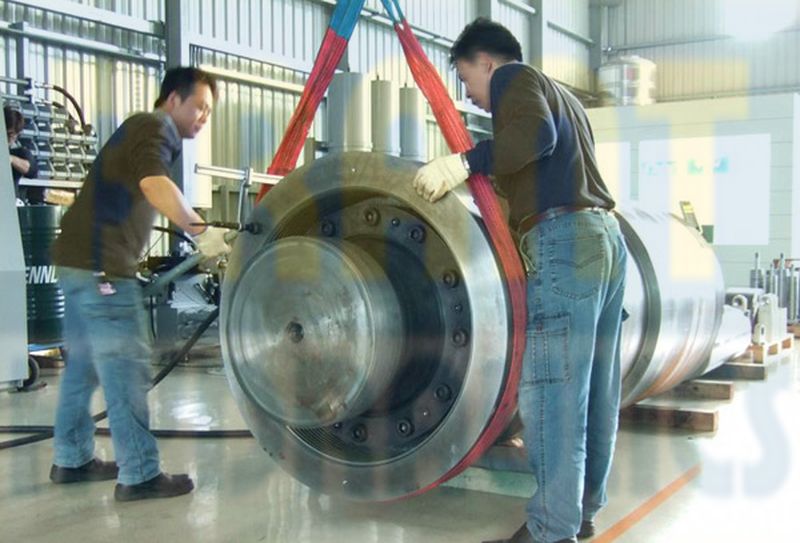Common Causes for Hydraulic Cylinders Breakdown
Hydraulic cylinders are the sometimes forgotten, often overlooked muscles that provide functionality to a wide range of mechanical and industrial equipment and applications. The massive amount of power that results from pressurized fluid flowing into and out of a well-engineered and meticulously manufactured hydraulic cylinder are mission critical components in many different industries such as construction, aircraft support and maintenance, waste management and recycling, railroad operations, manufacturing, shipping and the military—the list goes on. Despite the inherent power and functionality of hydraulic cylinders, they still require regular maintenance and sometimes in order to perform as specified for the applications in which they are used. Improperly maintained hydraulic cylinders can and ultimately will fail, sometimes with catastrophic results. Here are the most common causes of hydraulic cylinder failure.
Contaminated Fluid

Contaminated fluid in a hydraulic system is one of the most common causes of hydraulic cylinder failure. Foreign particulate matter that is inadvertently introduced into the hydraulic fluid can scratch and score the interior of the cylinder. Other liquid contaminates can eat away at critical seals and fittings. In both cases, the contamination of the hydraulic fluid results in a significant degradation of the cylinder’s operational efficiency.
Damaged Seals
The seals in a hydraulic system can be damaged by physical abuse or, as mentioned previously, by contaminated fluid. A damaged seal will affect the ability of the cylinder to maintain the correct internal operating pressure, which in turn impacts the efficiency of the device. Unless the damaged seals are replaced, performance degradation increases over time as the seal damage becomes more pronounced.
Hydraulic Cylinder Side Loads

Hydraulic cylinders are designed to apply force along a specifically intended axis that is aligned with the cylinder itself. In other words, the bi-directional force of the cylinder occurs on a vector defined by the positioning of the cylinder. In a proper hydraulic cylinder installation, the cylinder is installed depending on the intended direction of the desired force vector.
However, hydraulic cylinders are often installed in such a way that forces are applied on a perpendicular axis to the intended direction of movement. This is called side loading, which places unintended strain on all of the components of the hydraulic cylinder. Excessive side loading can result in the catastrophic failure of a hydraulic cylinder. Moderate side loading will accelerate the deterioration of the components of the cylinder, ultimately reducing the lifespan of the device. This is one of the most damaging types of hydraulic cylinder failure.
Piston Damage
Piston damage is caused when the nut or piston retaining device loosens over time. Piston damage occurs from a number of causes. First, like any piece of mechanical equipment, pistons will ultimately wear out. Also, as discussed previously, contaminated fluid or side loading can also result in piston damage. Depending on the load placed on the hydraulic cylinder and the severity of the piston damage, at some point the cylinder will fail completely, resulting the complete loss of power from the device.
Piston Damage
In order to perform according to design specifications, the fluid in a hydraulic cylinder must be maintained at a precise and closely controlled internal pressure. Pressure variations above or below design specifications will have a significant impact on the performance of the device. The pressure should be monitored on a regular basis and adjusted to comply with the manufacturer’s specifications.
Additional Causes of Hydraulic Cylinder Failure
In addition to the problems defined above, there are several other less common but nevertheless critical causes of hydraulic cylinder failure.

The first is physical damage, typically caused by an accident of some sort. External damage to a hydraulic cylinder can create a wide range of problems, all of which will degrade the performance of the device if not destroy it completely. Examples include cracks in the cylinder’s exterior that result in fluid leaks, a bent piston, or a repositioning of the device causing excessive side loading, to name a few. The important thing to understand is that any time a hydraulic cylinder has been exposed to damage, it should be professionally inspected as quickly as possible.
Another common cause of hydraulic cylinder failure is improper maintenance. A hydraulic cylinder is a piece of precision machinery and must be treated as such. Improper installation, using the incorrect fluid or seals, and over-filling or under-filling the device are all examples of improper care that can result in low performance levels or outright failure.
Hydraulic Cylinder Repair & Maintenance That You Can Depend On
The downtime and lost efficiencies that result from poorly maintained hydraulic cylinders add up very quickly and can have a huge impact on your business, especially when they occur unexpectedly. Brant Hydraulics can minimize or eliminate these issues through regularly scheduled preventive maintenance services. And if a system does go down, we provide quick and efficient turnaround, repairing and returning equipment to service in the shortest amount of time. We are familiar with all of the most common causes of hydraulic cylinder failure.
No job is too large or too small for our skilled, highly trained, and well-seasoned team of technical experts. We offer a wide range of services, from standardized repair and maintenance to complex, customized fabrication. All of our repair or fabrication work meets or exceeds the OEM specifications of the manufacturer.
Brant Hydraulics has hands on experience in a broad array of industries. Contact us today to find out how we can support your business.
